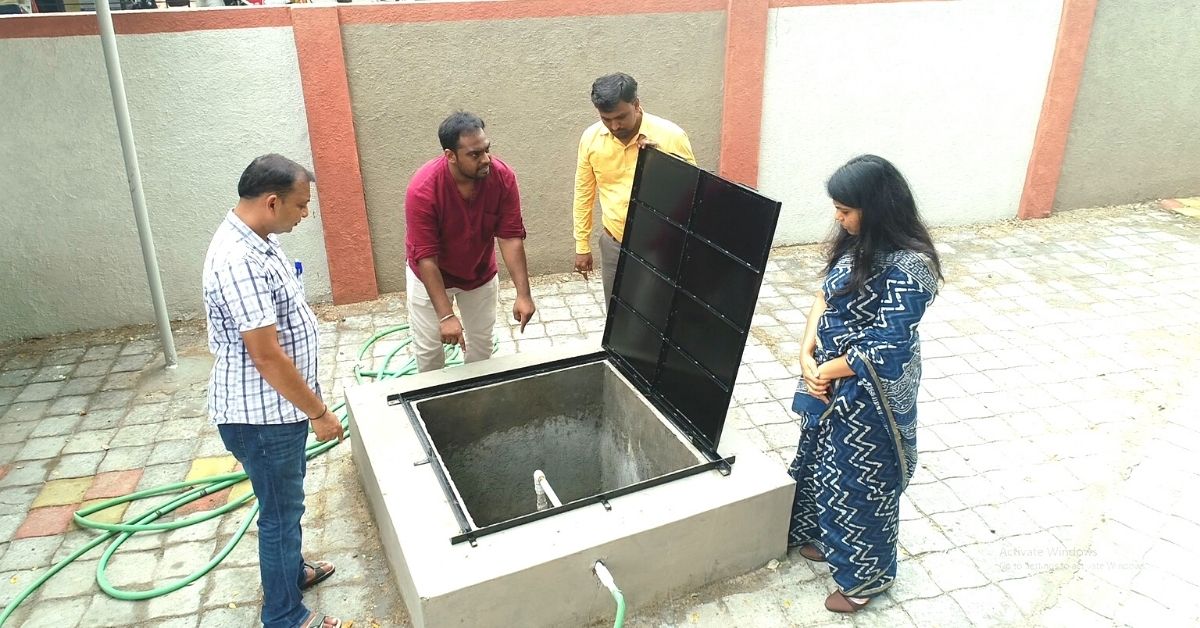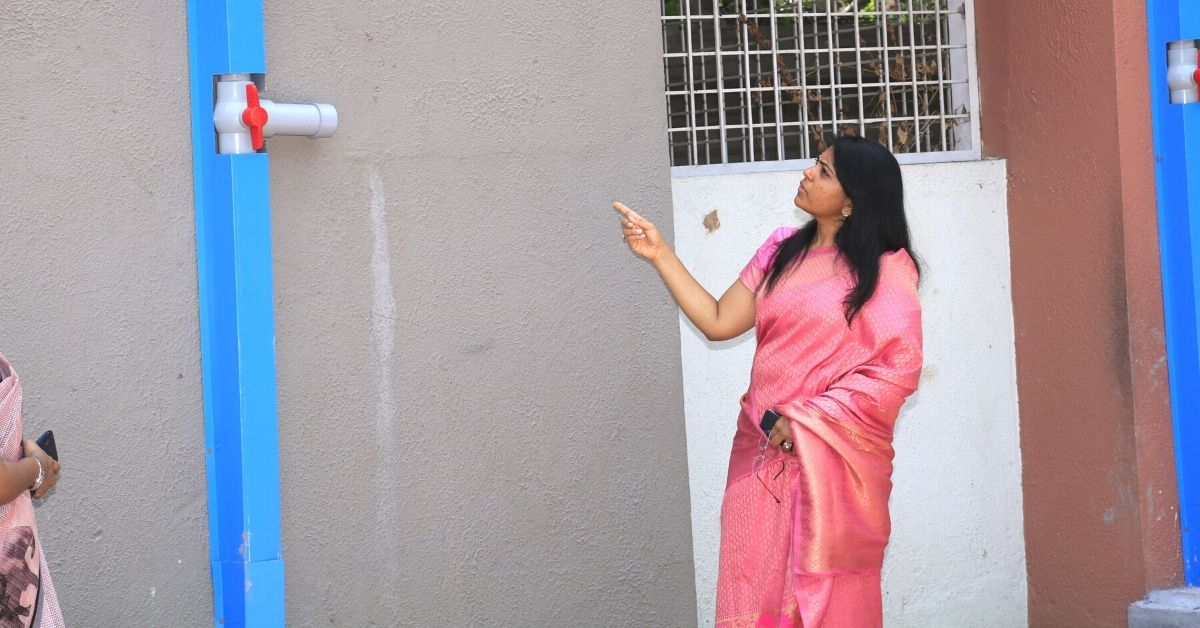In July 2019, life in Vadodara, Gujarat, came to a screeching halt when the city recorded 242 mm of rainfall within six hours.
District Collector Shalini Agarwal jumped in to mitigate the effects of the crisis, and witnessed the devastation that had followed the disaster. Eventually, as the rain receded and the city slowly climbed back to its feet, she learned a worrisome fact. Many schools were left without sufficient water to meet their drinking and domestic needs.
To address the issue, the officer decided to take stringent steps. “The irony of letting crores of litres of water drain away, while suffering from a water crisis, troubled me. I realised the need to fill the gaps. Hence, discussions with officials revealed that rainwater harvesting could be the solution,” she tells The Better India.
Shalini says that hundreds of government schools and infrastructure presented an open opportunity to install rainwater harvesting systems. “About 8% of rainwater is harvested. It is a poor number and has the potential to increase. The school infrastructure could arrest the water and recharge groundwater levels. They could then use it for the remaining year,” she explains.
The district administration identified 1,071 schools, of which 37 schools had already installed the water recharging infrastructure. Shalini pledged not to let any school experience water scarcity next year, and drew a plan to install a rainwater harvesting system within a year. Thus, initiating project Varsha Kal Nidhi in 2020, the administration has covered 963 schools for water conservation, that will benefit 1.8 lakh students by saving 10 crore litres of water. All the schools have set up the required infrastructure in a record nine months.
Low-cost, yet effective

Achieving this task, however, demanded immense financial support and a robust workforce. Shalini started pulling in resources from the state government, Zilla Parishad, CSR and other sources. The administration raised a total of Rs 5.84 crore. “Each rainwater harvesting system cost around Rs 3-5 lakh. It was not feasible to spend such amounts on each project. Hence, a cost-effective, innovative solution could only bring the expenses down,” she explains.
A technical committee comprising experts, engineers from Samagra Shiksha Abhiyan, a government scheme for inclusive and equal education opportunity for students pre-school to Class XII, and other professionals conceived a low-cost model. The team came up with two models that reduced the cost ranging between Rs 25,000 and Rs 90,000.
“One model designed for schools had provisions for tube wells or hand pumps. It cost between Rs 25,000 and Rs 40,000. The other model was developed for schools without recharge wells or percolation tanks, needed to be dug, and cost Rs 45,000-90,000,” Shalini says.
“The rainwater is collected from the terrace and channelised through pipes towards a chamber in the ground. The chamber then filters and percolates the water in the bore well, ensuring direct groundwater recharge,” she explains.
In both cases, the 75 mm pipe harvest the water from the roof into the chambers. Once the water reaches the bottom, a 110 mm pipe pushes water from the chambers to the percolation tank.
Each system can harvest 1 lakh litres of water and collectively amounts crores of litres.
However, just seeking funds and innovating alone would not solve the problem. “People need to be made aware of the water crisis and the situation. We did not want it to become a government initiative and decided to instil a sense of ownership among stakeholders. Hence, we progressed towards capacity building and training for school management committees, school staff and students,” he says.

Shalini adds that various workshops, competitions and events were held across Vadodara. “Children were made brand ambassadors and people were sensitised about the importance of conservation,” she says, adding that all stakeholders were made aware of their water requirements for domestic and drinking purposes.
“Once everyone realises the water requirement and the reason for shortage due to exploitation and careless behaviour, its conservation becomes simpler to understand. On average, a student consumes 300 ml of water in school. Other than that, the water is used for toilets and other such functional uses. But if each school harvests water for one season, it can suffice for the next four years,” Shalini says.
‘Rainwater harvesting is not rocket science’
Janu Parmar, a Class VIII student at Dhorivaga Primary School in Padra taluka, says the rainwater harvesting system can store one lakh litres. “The system was installed in October, and through the effort, we aim to prevent water from draining into the rivers and eventually the ocean. In return, it will help us meet drinking and non-potable water needs,” she says.
Janu adds the groundwater levels are estimated to increase, and the water will be available at 70 feet after the recharge. “At present, the water is accessed reaching 100 feet deep. The rise in water levels will benefit the people around,” she says.
School Management Committee (SMC) member Balwant Singh Chawla says, “We attended the workshop and took training for installing the system. We built it in two months, and along with the school, the groundwater recharge will benefit the farming population in the village.”

He adds, “By understanding the benefit of rainwater harvesting, we hope the villagers will follow and work towards water conservation. Such measures will help avert a future water crisis.”
Shalini says the exercise would result in increasing groundwater levels. “It was a challenging task to mobilise so many people, bring awareness and change the mindset. Moreover, the COVID-19 pandemic only made the work difficult,” she adds.
The administration plans to expand the project in other educational institutes and government buildings. Many private entities have sought inspiration and started installing rainwater harvesting systems within their own buildings as well.
“Such initiatives help us realise the importance of water and motivate others. Everyone consumes water and it is a valuable resource passed on by generations. We must conserve and make it available for future generations,” Shalini says.
She adds that arranging a set of pipes from the roof and directing it to the ground can help in the environmental cause. “It’s not rocket science. Individuals should adopt the simple yet effective method to work towards water conservation,” Shalini says.
Edited by Divya Sethu
No comments:
Post a Comment